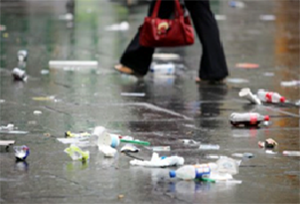Planning, developing, and implementing trash controls is one of the highest priority components of municipal stormwater management programs in the San Francisco Bay Area and throughout California. Trash control programs are designed to reduce the levels of trash and litter discharged from municipal storm drains and protect local creeks, rivers, and estuaries. Over the last decade, EOA staff has provided technical and regulatory support that has enabled our clients to implement cost-efficient trash control measures and effectiveness assessment programs demonstrating progress towards trash reduction benchmarks. With EOA’s assistance and guidance, our clients have successfully complied with challenging trash load reduction requirements in municipal stormwater permits. EOA has demonstrated experience with the following services:
- Long-term trash load reduction planning and implementation
- Developing trash generation maps
- Identifying optimal locations for trash full capture devices
- Developing trash assessment strategies
- Mapping of full capture treatment areas
- Conducting on-land visual trash assessments
- Calculating and reporting trash load reductions
- Conducting spatial analyses using Geographic Information System (GIS) tools, in order to inform the interpretation and communication of environmental data
CASE STUDIES

Trash Assessment Methodology and Management Strategy
Santa Clara Valley Urban Runoff Pollution Prevention Program
EOA has helped lead a Bay Area wide effort to meet the ever increasing trash reduction targets that cities must meet under the Permit until a goal of “No Impact” is reached by the year 2022. EOA has provided SCVURPPPP Co-permittees with on-going support with the development and implementation of trash characterization, management, and reduction effectiveness analysis. These activities are structured into a Trash Management and Assessment Strategy that serves as the basis for each Permittee’s annual work plan tasks. EOA has assisted SCVURPPP Permittee’s with the following tasks:
- developed a survey to determine and document existing trash management practices and policies
- developed a methodology to inventory and document trash management practices and areas of high trash generation
- worked with Permittees to organize each agency into Trash Management Areas (TMAs) to better organize trash reduction efforts
- maintain a geodatabase of all areas partially and fully treated by trash capture devices
- created a regional trash assessment methodology, data collection and management process, and conducted trash assessment training workshops
- used GIS to develop a random sampling design so trash assessment results can be extrapolated and confidence intervals can be calculated
- calculate trash reductions quickly and easily into a format that can be entered into each Permittee’s annual permit and Permittees can track progress over time
- developed a BMP Tool Box for Trash
- conducted field surveys to identify and quantify dominate trash sources and pathways in Santa Clara Valley creeks
- developing an initial feasibility assessment for retrofitting stormwater pump stations for more effective trash capture
Future tasks to be conducted by EOA include developing a strategy to identify optimal trash capture locations; assisting with conducting rapid trash assessments in Santa Clara creeks, providing ongoing support for trash full capture device installation and tracking, and continuing to perform visual trash assessments to measure each Permittee’s progress toward meeting Permit goals.